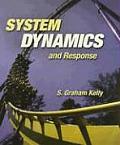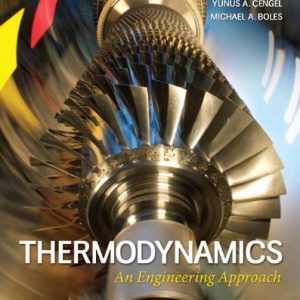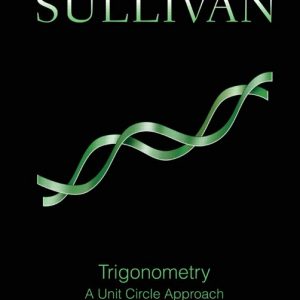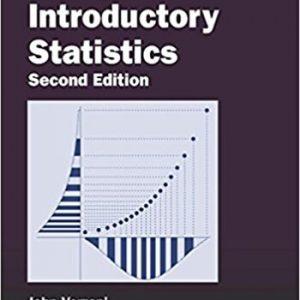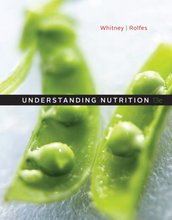Instant download Solutions Manual to accompany System Dynamics And Response 1st edition pdf docx epub after payment.
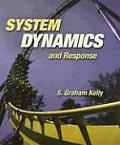
Product details:
- ISBN-10 : 0534549306
- ISBN-13 : 978-0534549305
- Author: Graham Kelly
As engineering systems become more increasingly interdisciplinary, knowledge of both mechanical and electrical systems has become an asset within the field of engineering. All engineers should have general facility with modeling of dynamic systems and determining their response and it is the objective of this book to provide a framework for that understanding. The study material is presented in four distinct parts; the mathematical modeling of dynamic systems, the mathematical solution of the differential equations and integro differential equations obtained during the modeling process, the response of dynamic systems, and an introduction to feedback control systems and their analysis. An Appendix is provided with a short introduction to MATLAB as it is frequently used within the text as a computational tool, a programming tool, and a graphical tool. SIMULINK, a MATLAB based simulation and modeling tool, is discussed in chapters where the development of models use either the transfer function approach or the state-space method.
Table Of Contents:
Chapter 1 – Introduction 1.1 Dynamic Systems 1.1.2 Control Systems 1.2 Dimensions and Units 1.3 Mathematical Modeling of Dynamic Systems 1.4 System Response 1.5 Linearization of Differential Equations 1.6 Unit Impulse Function and Unit Step Function 1.6.1 Unit Impulse Function 1.6.2 Unit Step Function 1.7 Stability 1.8 MATLAB 1.9 Scope of Study 1.10 Summary 1.10.1 Chapter Highlights 1.10.2 Important Equations Problems Chapter 2 – Mechanical Systems 2.1 Inertia Elements 2.1.1 Particles 2.1.2 Rigid Bodies 2.1.3 Deformable Bodies 2.1.4 Degrees of Freedom 2.2 Springs 2.2.1 Force-Displacement Relations 2.2.2 Combinations of Springs 2.2.3 Static Deflections 2.3 Friction Elements 2.3.1 Viscous Damping 2.3.2 Coulomb Damping 2.3.3 Hysteretic Damping 2.4 Mechanical System Input 2.4.1 External Forces and Torques 2.4.2 Impulsive Forces 2.4.3 Step Forces 2.4.4 Periodic Forces 2.4.5 Motion Input 2.5 Free-Body Diagrams 2.6 Newton’s Laws 2.6.1 Particles 2.6.2 Rigid Body Motion 2.6.3 Pure Rotational Motion About a Fixed Axis of Rotation 2.6.4 Planar Motion of a Rigid Body 2.6.5 Three-Dimensional Motion of Rigid Bodies 2.6.6 D’Alembert’s Principle 2.6.6.1 Particles 2.6.6.2 Rigid Bodies Undergoing Planar Motion 2.7 Single-Degree-of Freedom Systems 2.8 Multi-Degree-of-Freedom Systems 2.9 Energy Methods 2.9.1 Principles of Work and Energy 2.9.2 Equivalent Systems 2.9.3 Energy Storage 2.9.4 Lagrange’s Equation for Multi-Degree-of-Freedom Systems 2.9.5 States and Order 2.10 Further Eamples 2.11 Summary 2.11.1 Modeling Methods 2.11.2 Chapter Highlights 2.11.3 Important Equations Problems Chapter 3 – Electrical Systems 3.1 Charge, Current, Voltage, and Power 3.2 Circuit Components 3.2.1 Resistors 3.2.2 Capacitors 3.2.3 Inductors 3.2.4 Voltage and Current Sources 3.2.5 Operational Amplifiers 3.2.6 Electric Circuits and Mechanical Systems 3.3 Kirchoff’s Laws 3.4 Circuit Reduction 3.4.1 Series and Parallel Components 3.4.2 Series Combinations 3.4.3 Parallel Combinations 3.5 Modeling of Electric Circuits 3.6 Mechanical Systems Analogies 3.6.1 Energy Principles 3.6.2 Single Loop Circuits with Voltage Sources 3.6.3 Single Loop Circuits with Current Sources 3.6.4 Multiple Loop Circuits 3.6.5 Mechanical Systems with Motion Input 3.6.6 States 3.7 Operational Amplifiers 3.8 Electromechanical Systems 3.8.1 Magnetic Fields 3.8.2 General Theory 3.8.3 DC Servomotors 3.8.4 Microelectromechanical Systems (MEMS) and Nanoelectromechanical Systems (NEMS) 3.9 Further Examples 3.10 Summary 3.10.1 Mathematical Modeling of Electrical Systems 3.10.2 Other Chapter Highlights 3.10.3 Important Equations Problems Chapter 4 – Fluid, Thermal, and Chemical Systems 4.1 Introduction 4.2 Control Volume Analysis 4.2.1 Conservation of Mass 4.2.2 Energy Equation 4.2.3 Bernoulli’s Equation 4.3 Pipe Flow 4.3.1 Losses 4.3.2 Orifices 4.3.3 Compressible Flows 4.4 Modeling of Liquid Level Systems 4.5 Pneumatic and Hydraulic Systems 4.5.1 Pneumatic Systems 4.5.2 Hydraulic Systems 4.6 Thermal Systems 4.7 Chemical and Biological Systems 4.7.1 Continuous Stirred Tank Reactors (CSTR) 4.7.2 Biological Systems 4.8 Further Examples 4.9 Summary 4.9.1 Mathematical Modeling of Transport Systems 4.9.2 Chapter Highlights 4.9.3 Important Equations Problems Chapter 5 – Laplace Transforms 5.1 Definition and Existence 5.2 Determination of Transform Pairs 5.2.1 Direct Integration 5.2.2 Use of MATLAB 5.3 Laplace Transform Properties 5.4 Inversion of Transforms 5.4.1 Use of Tables and Properties 5.4.2 Partial Fraction Decompositions 5.4.2.1 Real Distinct Poles 5.4.2.2 Complex Poles 5.4.2.3 Repeated Poles 5.4.2.4 Brute Force Methods 5.4.3 Inversion of Transforms of Periodic Functions 5.4.4 Use of MATLAB 5.5 Laplace Transform solution of Differential Equations 5.5.1 Systems With One Dependent Variable 5.5.2 Systems of Differential Equations 5.5.3 Integro-Differential Equations 5.5.4 Use of MATLAB 5.6 Further Examples 5.7 Summary 5.7.1 Mathematical Solutions for Response of Dynamic Systems 5.7.2 Important Equations Problems
People also search:
System Dynamics And Response 1st edition
System Dynamics And Response 1st edition pdf
System Dynamics And Response pdf
what is system dynamics
system dynamics examples

